Abstract
1. The urinary radio-iodide excretion following injection of [131I]thyroxine and tri-iodothyronine is increased in acutely cold-exposed, thyroidectomized rats.
2. This cold response is demonstrable in animals which are fed or fasted or deprived of both food and water. Cold exposure does not increase the rate of urinary excretion of a tracer dose of radio-iodide. It is concluded that cold exposure accelerates the rate of deiodination of both thyroxine and tri-iodothyronine.
3. It is confirmed that both adrenaline and noradrenaline administered in vivo can enhance the rate of thyroxide deiodination.
4. The sympathetic blocking agents guanethidine and bethanidine reduce the extra deiodination of thyroxine induced by cold exposure. Bethanidine was also found to reduce the deiodination of tri-iodothyronine during cold.
5. There is a positive correlation between the deiodination of thyroxine and the urinary catecholamine excretion in the cold-exposed but not the warm-exposed rat.
6. It is suggested that the enhanced deiodination during cold exposure is mediated by the release of noradrenaline from the sympathetic nervous system.
Full text
PDF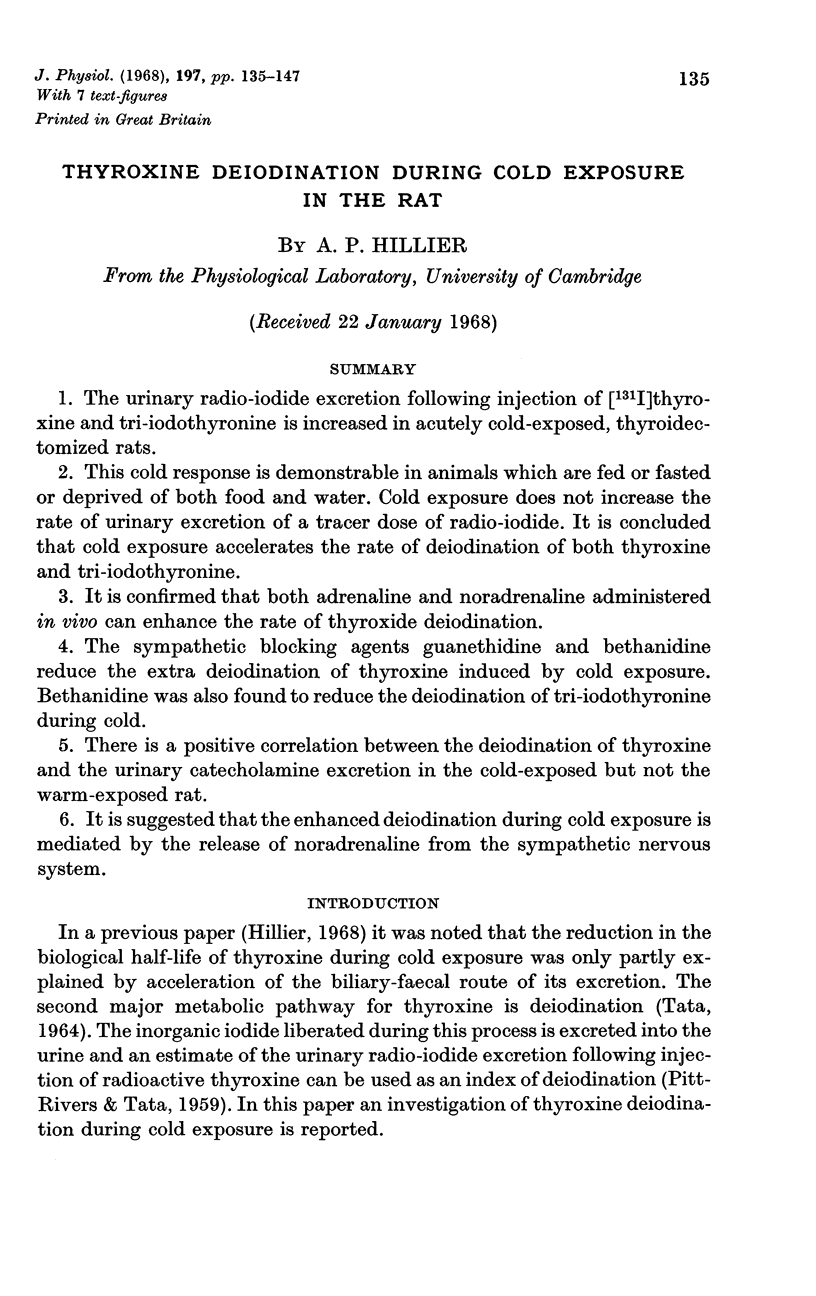
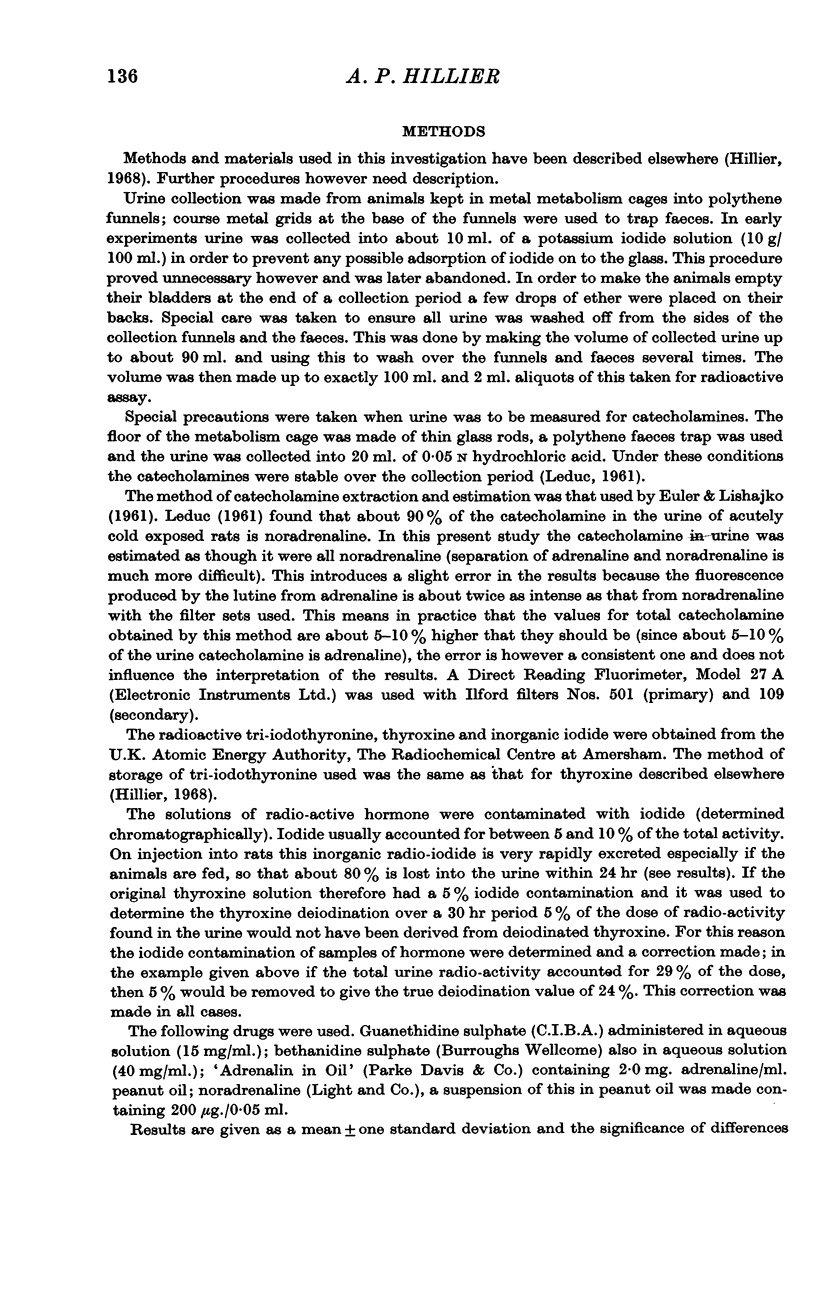
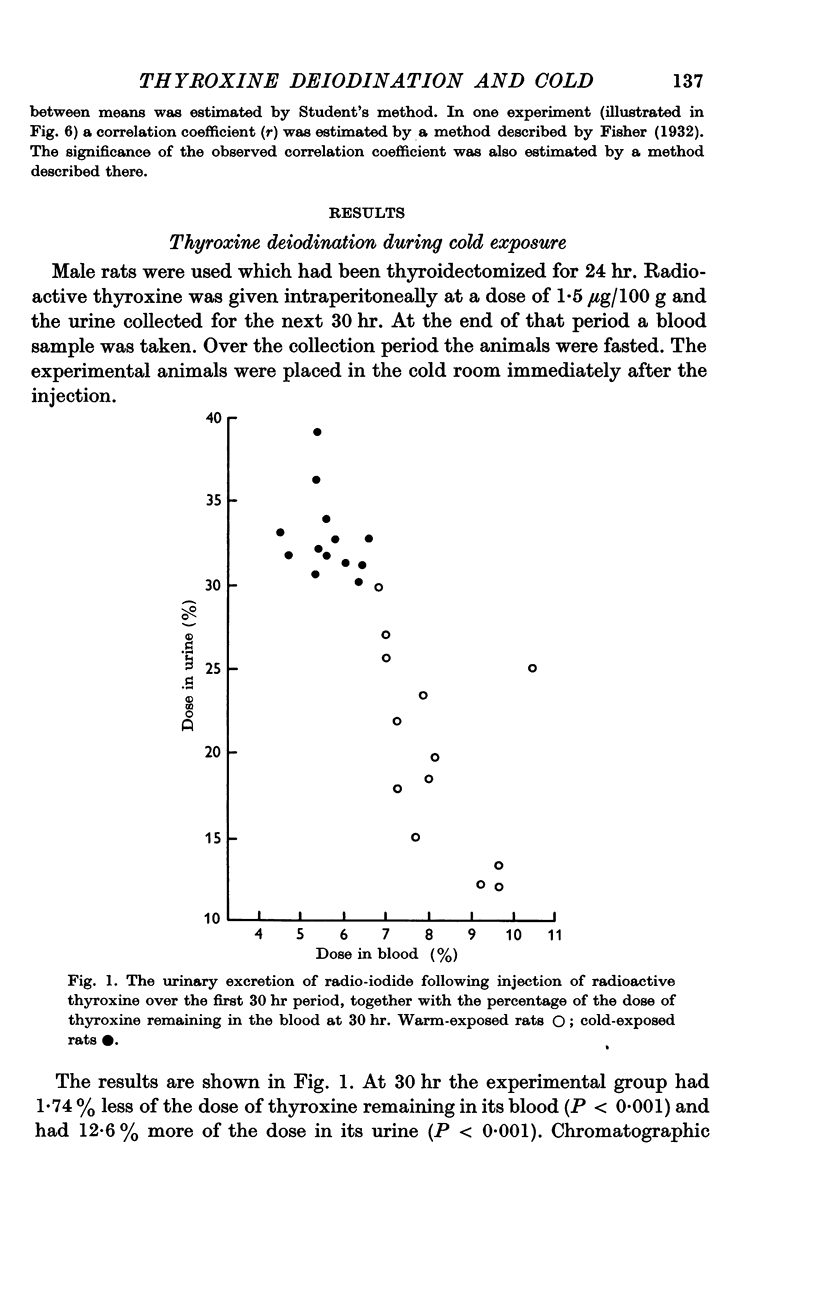
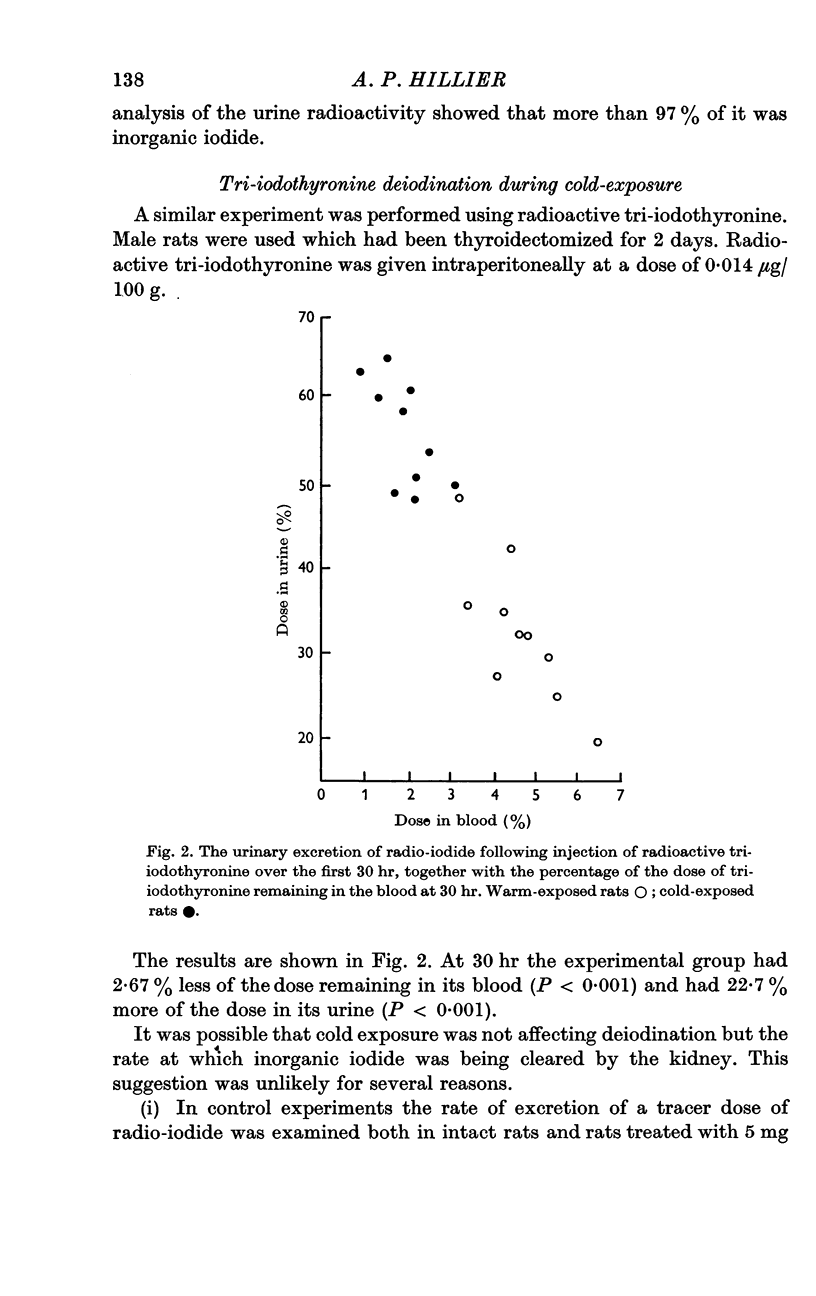
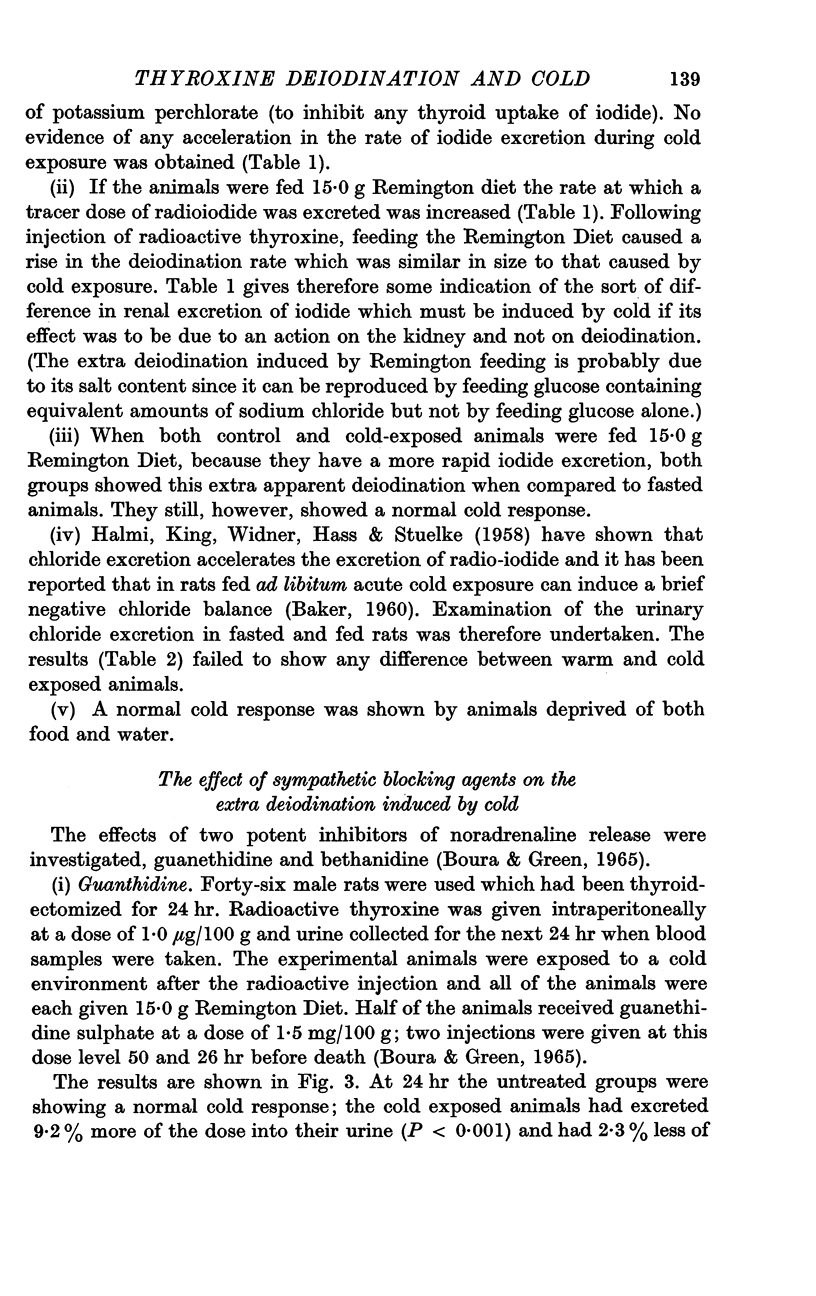
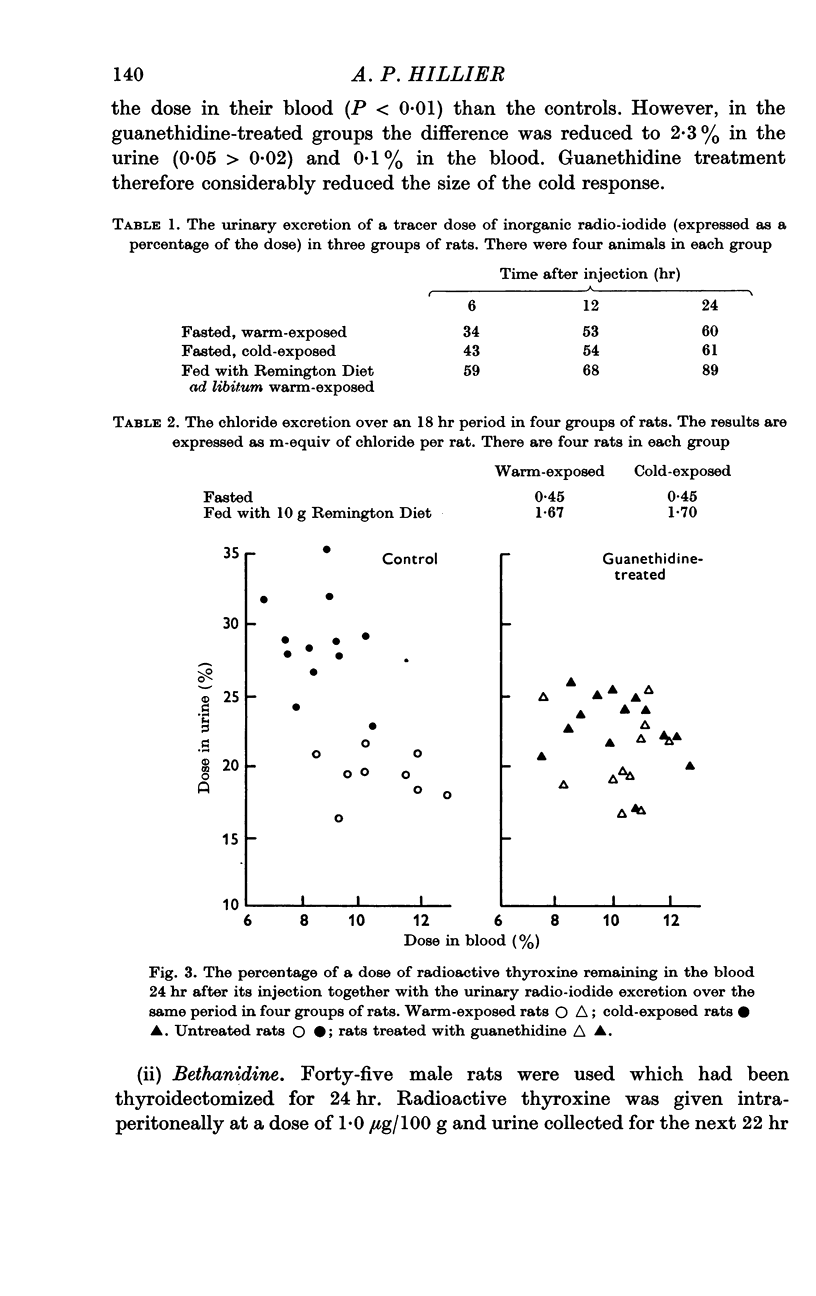
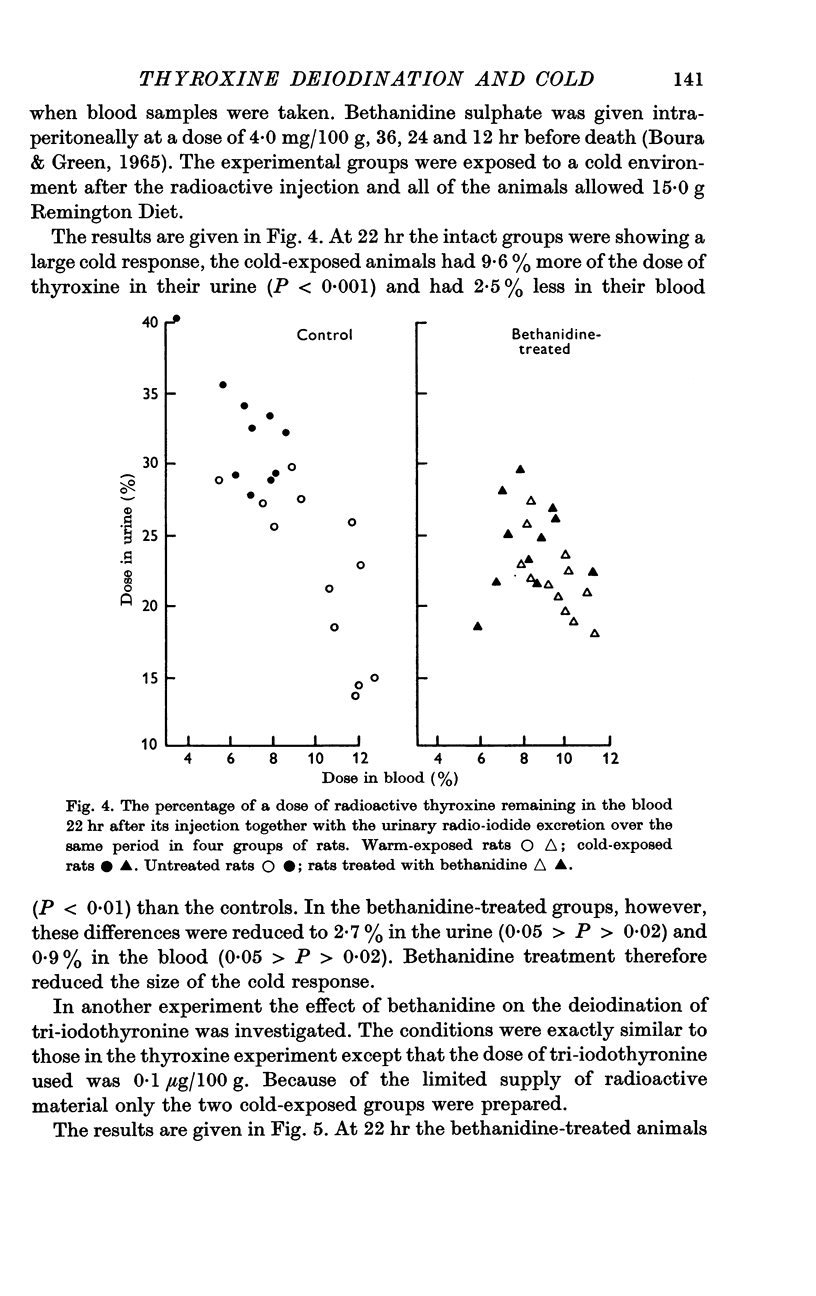
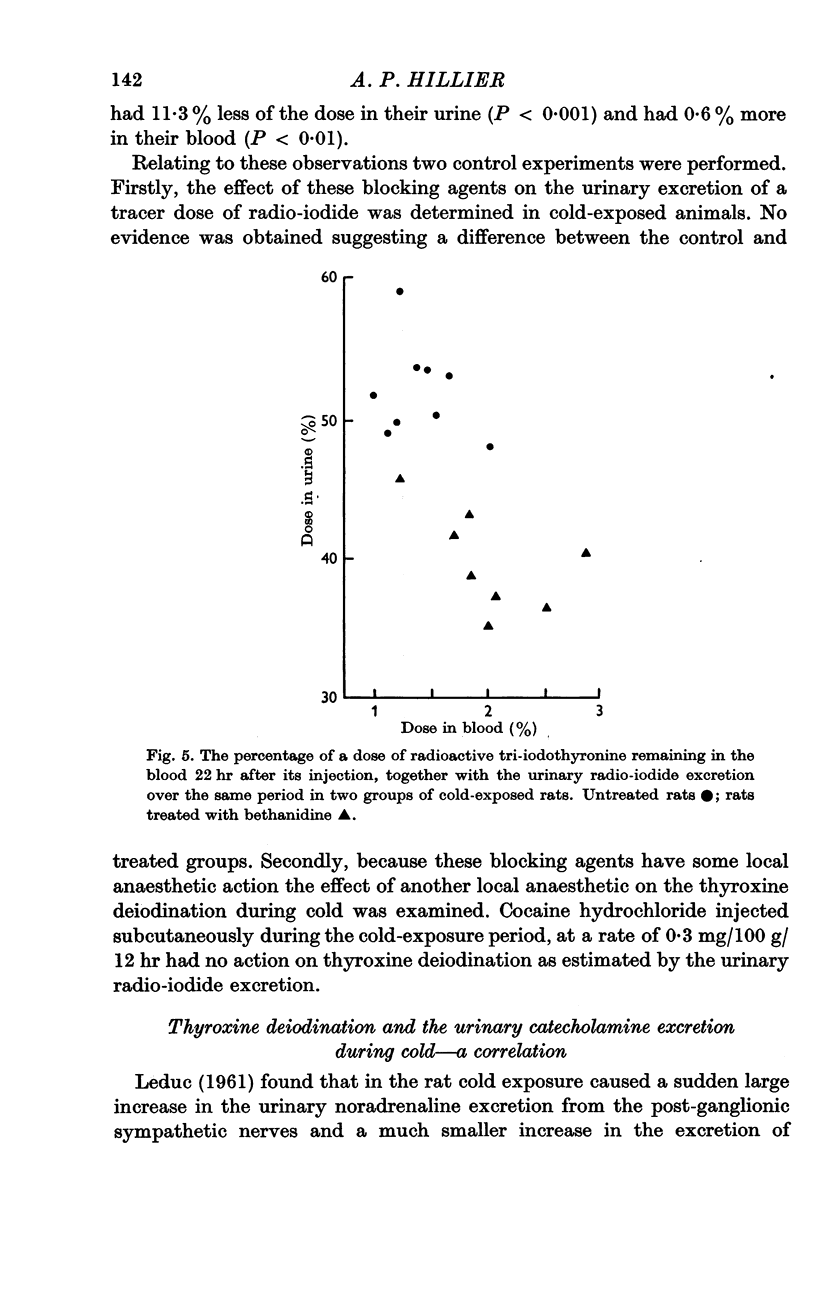
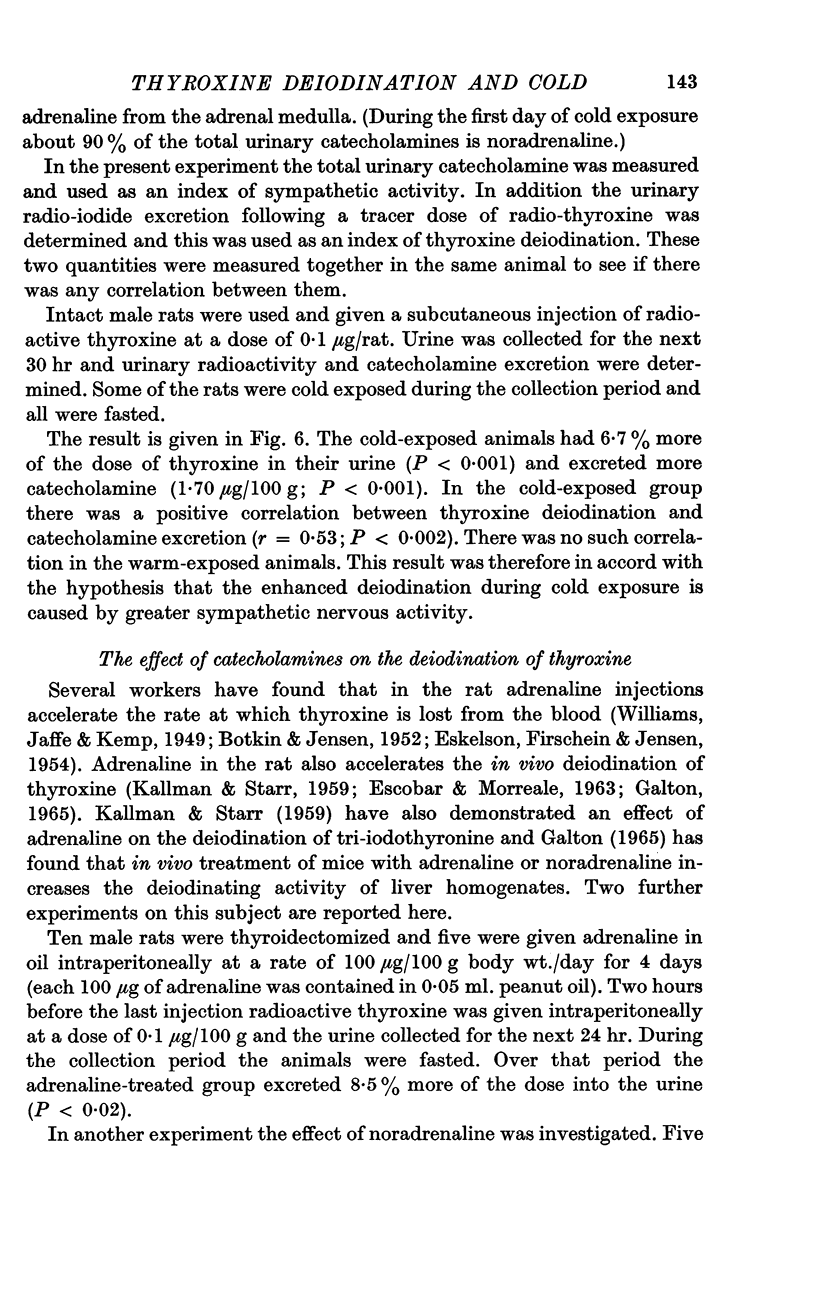
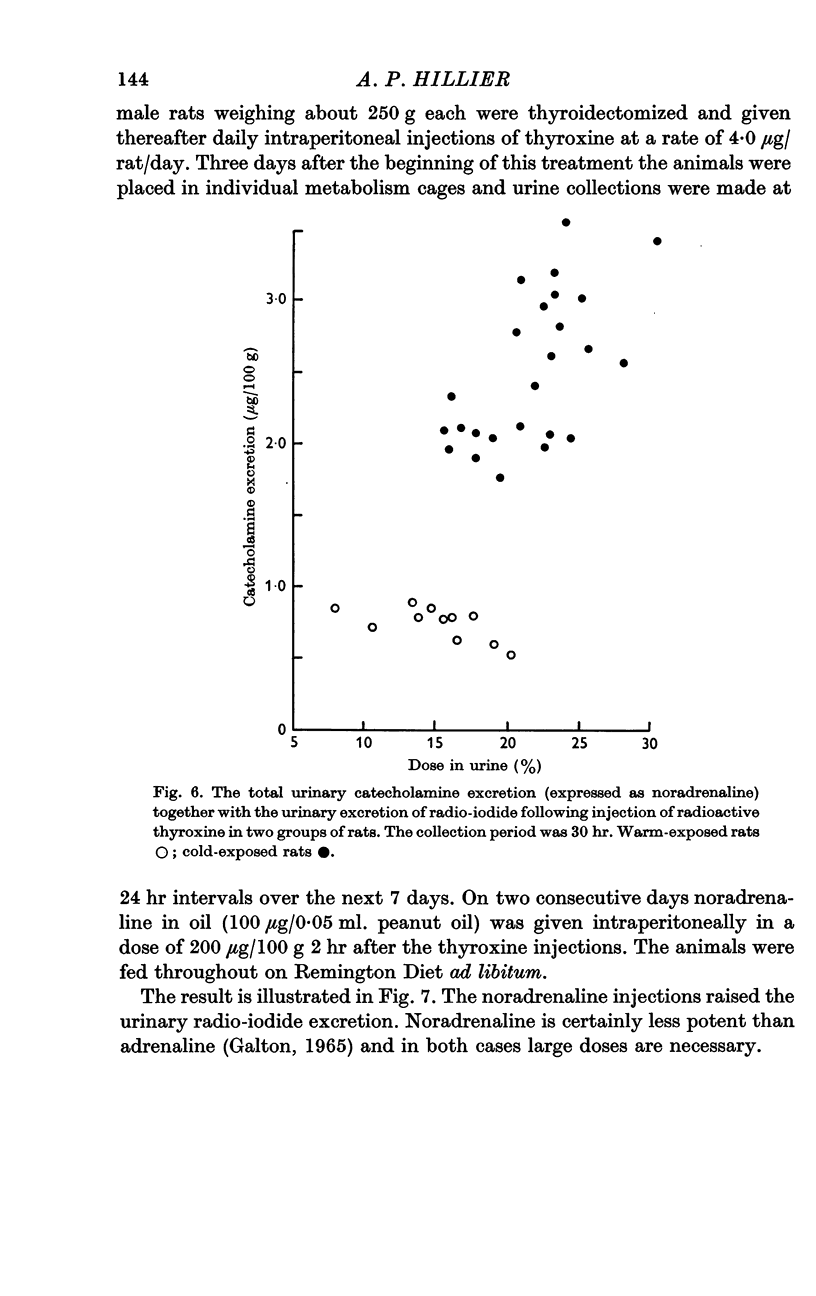
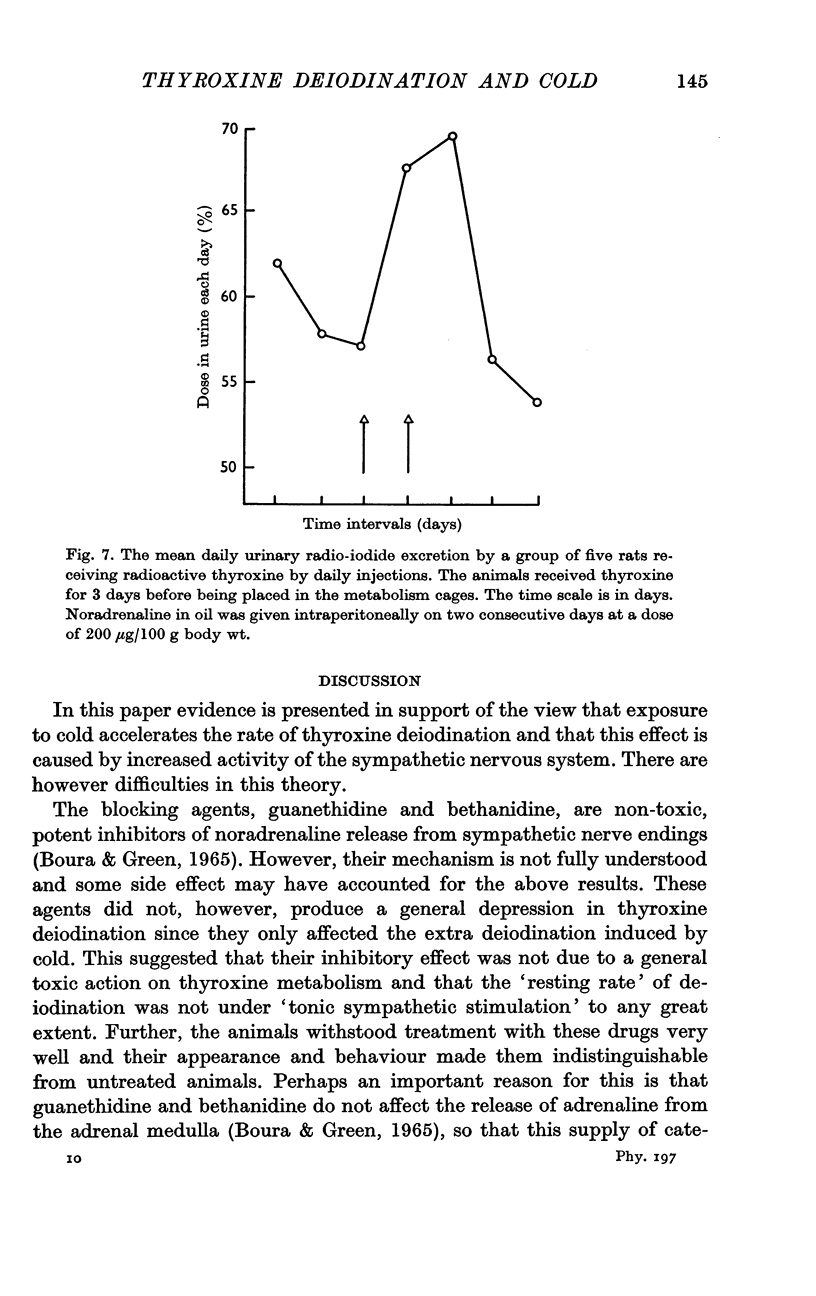

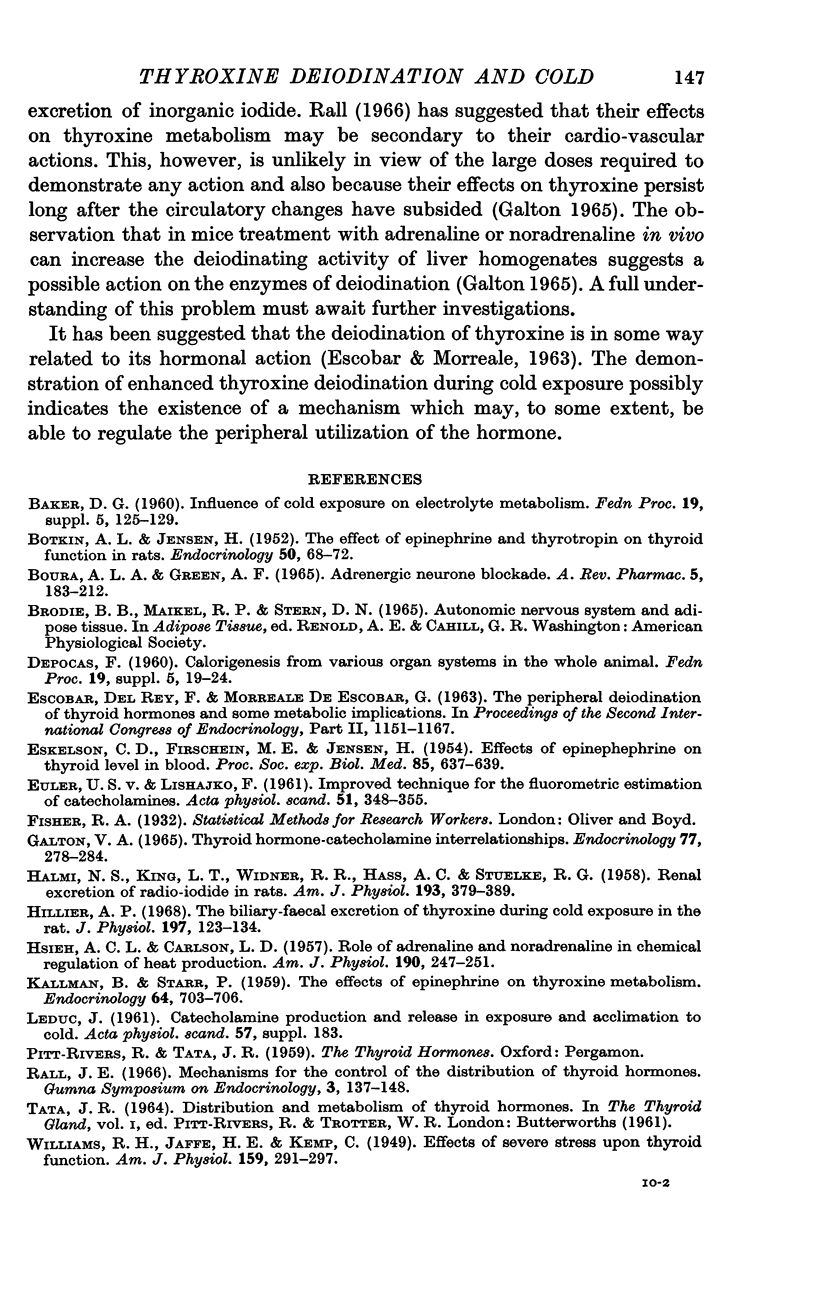
Selected References
These references are in PubMed. This may not be the complete list of references from this article.
- BAKER D. G. Influence of cold exposure on electrolyte metabolism. Fed Proc. 1960 Dec;19(Suppl 5):125–130. [PubMed] [Google Scholar]
- BOTKIN A. L., JENSEN H. The effect of epinephrine and thyrotropin on thyroid function in rats. Endocrinology. 1952 Jan;50(1):68–72. doi: 10.1210/endo-50-1-68. [DOI] [PubMed] [Google Scholar]
- BOURA A. L., GREEN A. F. ADRENERGIC NEURONE BLOCKING AGENTS. Annu Rev Pharmacol. 1965;5:183–212. doi: 10.1146/annurev.pa.05.040165.001151. [DOI] [PubMed] [Google Scholar]
- ESKELSON C. D., FIRSCHEIN H. E., JENSEN H. Effect of epinephrine on thyroid hormone level in blood. Proc Soc Exp Biol Med. 1954 Apr;85(4):637–639. doi: 10.3181/00379727-85-20976. [DOI] [PubMed] [Google Scholar]
- Galton V. A. Thyroid hormone-catecholamine interrelationships. Endocrinology. 1965 Aug;77(2):278–284. doi: 10.1210/endo-77-2-278. [DOI] [PubMed] [Google Scholar]
- HALMI N. S., KING L. T., WIDNER R. R., HASS A. C., STUELKE R. G. Renal excretion of radioiodide in rats. Am J Physiol. 1958 May;193(2):379–385. doi: 10.1152/ajplegacy.1958.193.2.379. [DOI] [PubMed] [Google Scholar]
- HSIEH A. C., CARLSON L. D., GRAY G. Role of the sympathetic nervous system in the control of chemical regulation of heat production. Am J Physiol. 1957 Aug;190(2):247–251. doi: 10.1152/ajplegacy.1957.190.2.247. [DOI] [PubMed] [Google Scholar]
- Hillier A. P. The biliary-faecal excretion of thyroxine during cold exposure in the rat. J Physiol. 1968 Jul;197(1):123–134. doi: 10.1113/jphysiol.1968.sp008550. [DOI] [PMC free article] [PubMed] [Google Scholar]
- KALLMAN B., STARR P. The effects of epinephrine on thyroxine metabolism: iodine excretion after various thyronine derivatives. Endocrinology. 1959 May;64(5):703–706. doi: 10.1210/endo-64-5-703. [DOI] [PubMed] [Google Scholar]
- WILLIAMS R. H., JAFFE H., KEMP C. Effect of severe stress upon thyroid function. Am J Physiol. 1949 Nov;159(2):291–297. doi: 10.1152/ajplegacy.1949.159.2.291. [DOI] [PubMed] [Google Scholar]
- von EULER U., LISHAJKO F. Improved technique for the fluorimetric estimation of catecholamines. Acta Physiol Scand. 1961 Apr;51:348–355. doi: 10.1111/j.1748-1716.1961.tb02128.x. [DOI] [PubMed] [Google Scholar]


